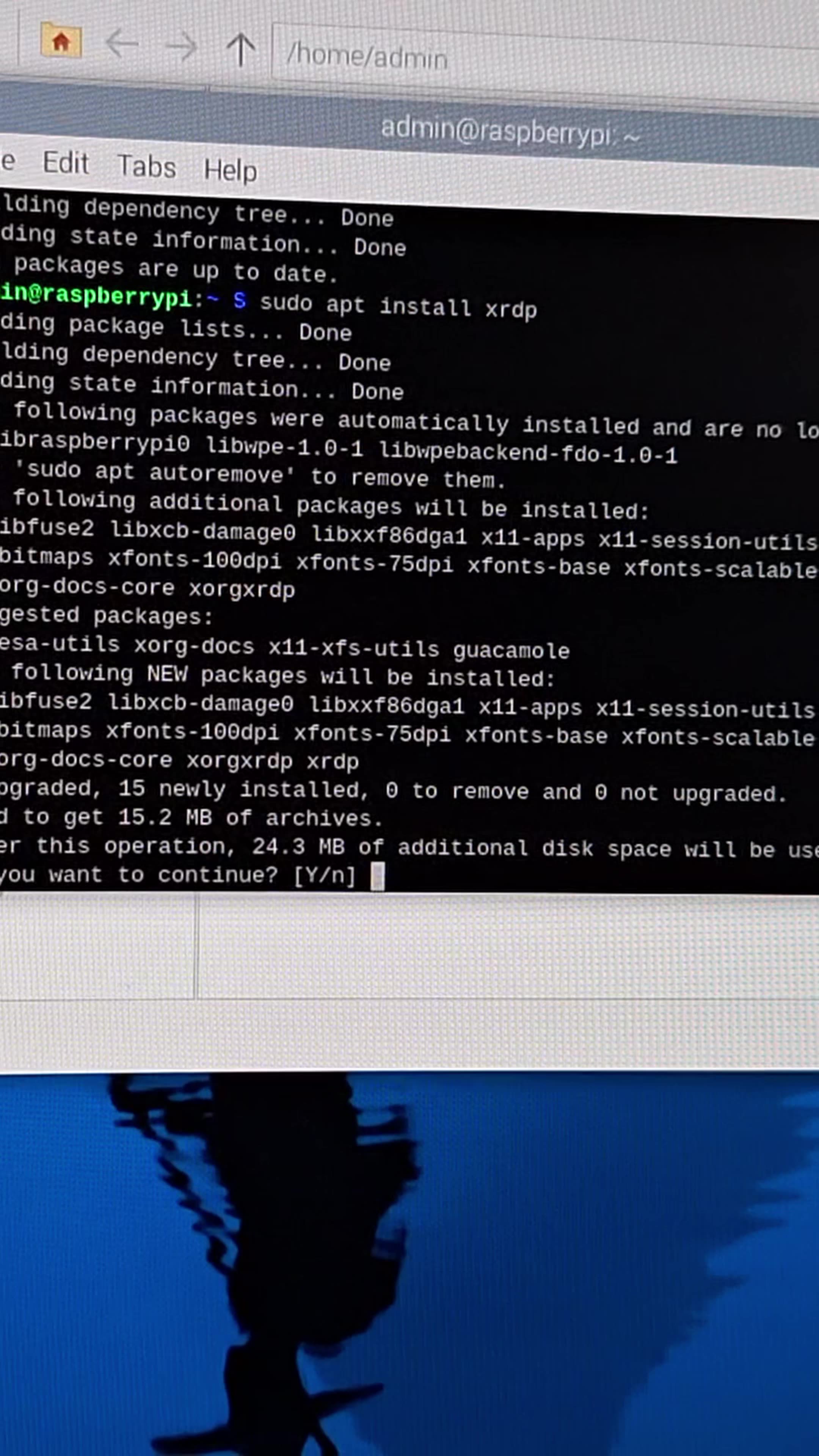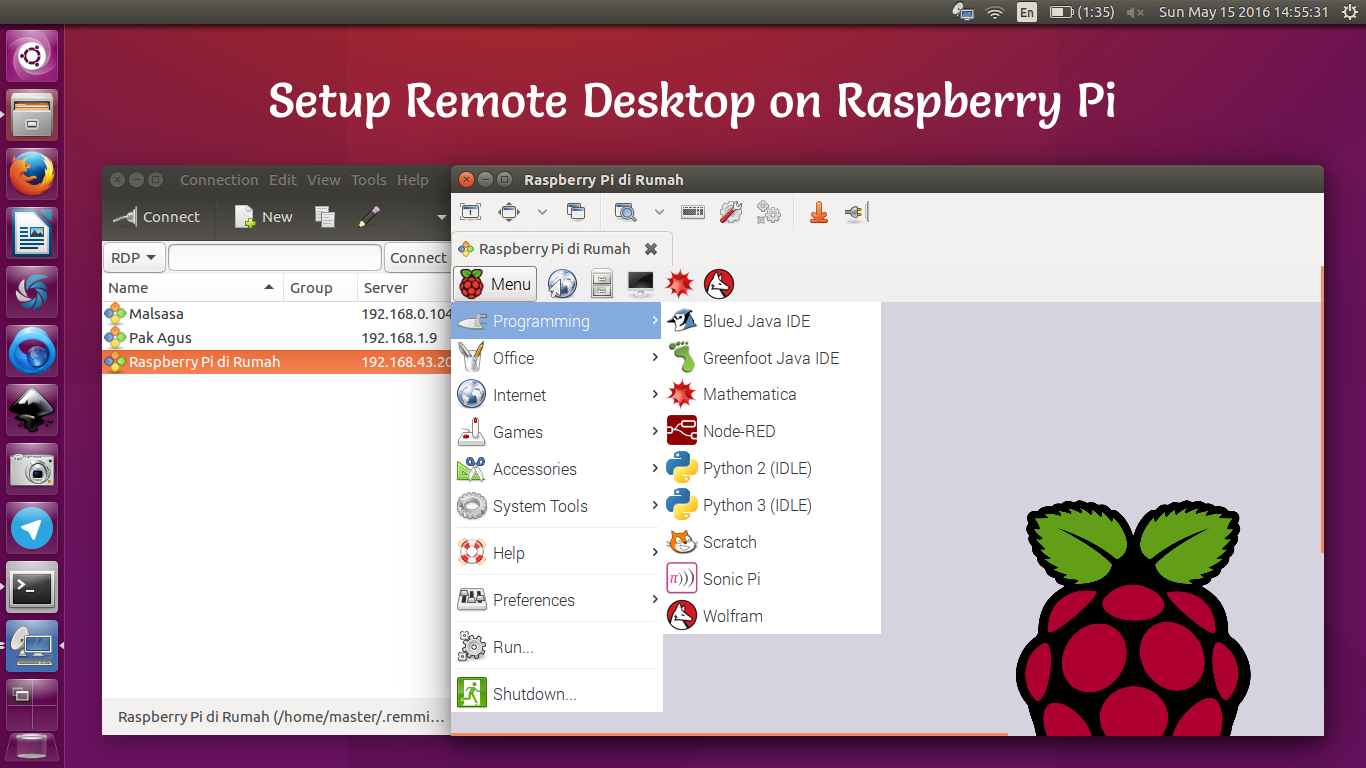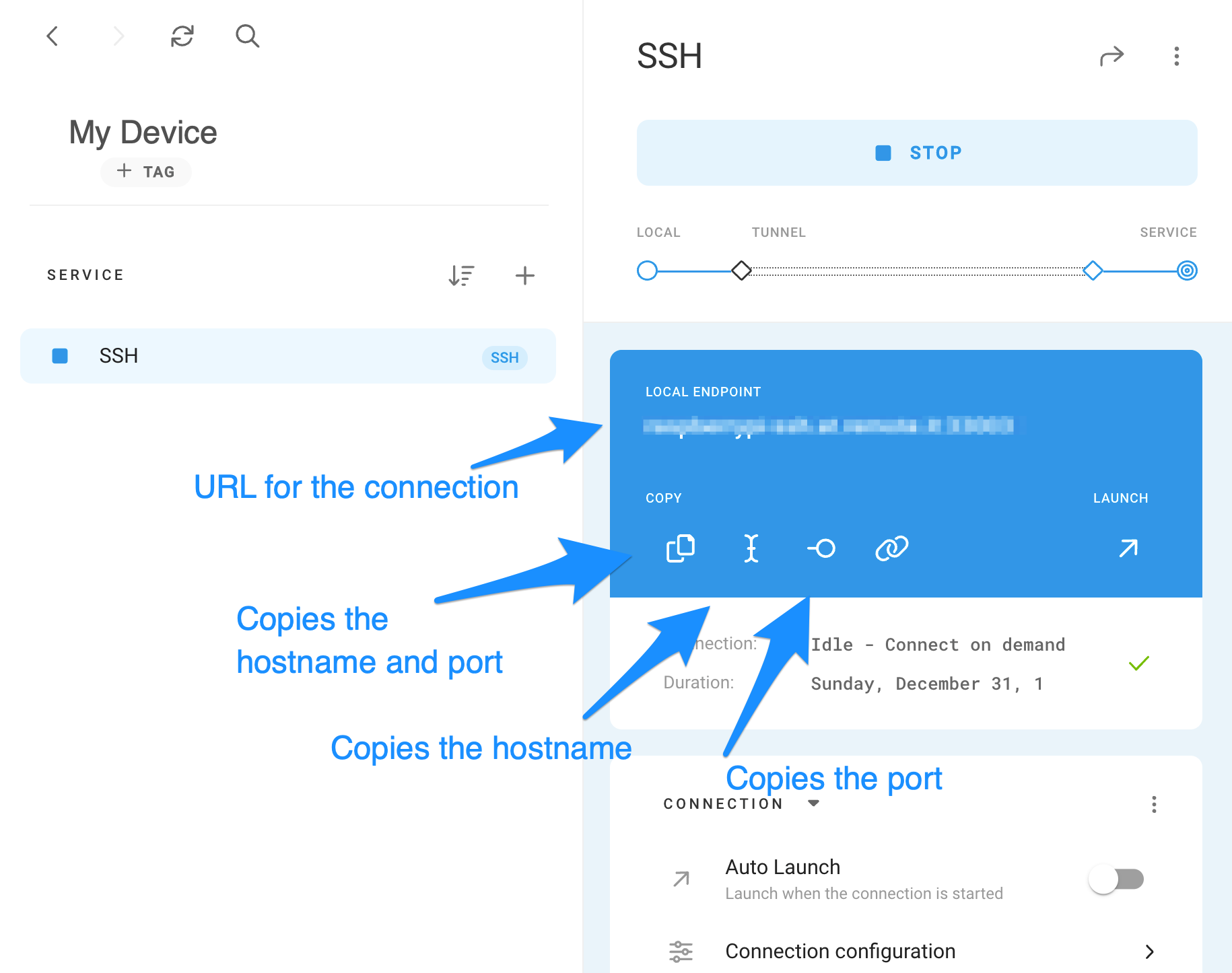Remote Access Raspberry Pi Device - Your Guide
There is something truly neat about being able to control your tiny computer, your Raspberry Pi, from anywhere you happen to be. Think about it: your little device could be tucked away in a closet, perhaps even in another building, and you could still get to it, make changes, or check on what it is doing. This kind of freedom really opens up a lot of possibilities for how you use these small, yet powerful, machines.
For many folks, having this kind of reach to their gadgets is more than just a convenience; it is a way to make their projects work better. Maybe you have a Pi set up to monitor your plants, or perhaps it is acting as a tiny server for your home network. You might even use it for some light computing tasks, like running a small program or keeping track of data. Being able to look in on these things without having to physically connect a keyboard and screen is, you know, pretty helpful.
We are going to talk about how you can set up this kind of connection for your own Raspberry Pi. We will look at some ways to make sure you can get to your device when you are not right there with it, sort of like having a long, invisible cable that reaches wherever you are. This means you can keep an eye on your projects, fix things if they go a little wonky, or just update what your Pi is doing, all from a distance, which is actually quite useful.
- Unveiling The Life Of Justin Gatlins Wife A Journey Beyond The Finish Line
- Exploring The Life Of Billy Bob Thorntons Brother
- Justin Bieber And P Diddy The Unlikely Connection
- Unveiling The Legacy Of The Sopranos A Deep Dive Into The Iconic Series
- Unveiling The Life Of Sonya Curry More Than Just A Basketball Mom
Table of Contents
- Why Would You Want to Reach Your Raspberry Pi From Afar?
- Ways to Get to Your Remote Access Raspberry Pi Device
- What Are Some Things to Think About for Remote Access Raspberry Pi Device?
- How Do You Keep Your Remote Access Raspberry Pi Device Safe?
- Getting Ready to Set Up Your Remote Access Raspberry Pi Device
Why Would You Want to Reach Your Raspberry Pi From Afar?
Many people find themselves in situations where they need to get to their Raspberry Pi without being in the same room. Maybe your Pi is doing something important in a hard-to-reach spot, like up in an attic, or perhaps it is part of a bigger setup that you do not want to disturb. For example, if you have a Pi acting as a media server, you might want to add new movies or change settings from your main computer, without having to go over to where the Pi is plugged in. This is where the idea of remote access really shines, you know, making things just simpler.
Consider the folks who use their Pis for home automation. They might have lights, thermostats, or security cameras hooked up to their little computer. If they are away from home, they might want to check on things, or even turn something on or off. Remote access makes this totally possible. It is also quite useful for anyone who is learning about coding or setting up servers. They can work on their Pi from their laptop at a coffee shop, or from a different room in their house, which is a pretty big plus. This kind of setup means you are not tied down to one spot, which, honestly, is a great feeling.
There are also those who are looking for jobs that let them work from anywhere. They might be setting up small virtual environments on their own devices, sort of like what some big companies do with their virtual desktops. Learning how to get to a small computer like a Raspberry Pi from a distance is a skill that can be pretty helpful in those kinds of roles. It shows you understand how to connect to systems that are not right in front of you, which is a big part of working remotely. So, for many reasons, knowing how to reach your remote access Raspberry Pi device is a good thing to know.
- Sophie Rain The Star Of The Spiderman Video Phenomenon
- Exploring The Life Of Mallory Swanson Does She Have A Kid
- Unraveling The Enigmatic Life Of Andrea Canning
- Latest Updates And Insights On Kendrick Lamar
- Unveiling The Journey Of Jason Tartick From Finance To Fame
Ways to Get to Your Remote Access Raspberry Pi Device
There are a few main ways people go about getting to their Raspberry Pi from somewhere else. Each way has its own good points and things to consider, depending on what you need to do with your Pi. Some ways are good for just typing commands, while others let you see the whole computer screen, just as if you were sitting right in front of it. We will look at some of the most common methods that people use, you know, to make this remote connection happen.
Using SSH for Your Remote Access Raspberry Pi Device
SSH, which stands for Secure Shell, is a very common way to get to your Raspberry Pi. It is a way to get a text-based command line from your main computer to your Pi. Think of it like opening a special window on your computer where you can type commands, and those commands are actually being run on your Raspberry Pi. It is pretty secure, which is a good thing, and it does not use a lot of your internet connection, so it is usually quick. This is often the first thing people set up when they want to reach their remote access Raspberry Pi device.
Setting up SSH is often quite simple. Most Raspberry Pi operating systems, like Raspberry Pi OS, have it ready to go, or it is just a simple setting to turn on. You usually just need to know your Pi's network address, which is like its home address on your local network. Then, from another computer, you use a special program, like PuTTY on Windows or the Terminal on Mac or Linux, to make the connection. You type in a command, put in your Pi's username and password, and then, boom, you are in. You can then run programs, move files around, or check on things, all by typing commands. It is a very basic, but very powerful, way to manage your remote access Raspberry Pi device, especially for folks who are comfortable with text commands.
The good part about SSH is how light it is. You do not need a fancy graphical interface, which means it works well even over slower internet connections. It is also very stable, so you can usually keep a connection going for a long time. The down side, for some, is that it is all text. If you are used to clicking on icons and moving a mouse, SSH might feel a bit different at first. But for many tech-minded people, it is their go-to for handling their remote access Raspberry Pi device, as a matter of fact.
VNC - A Visual Way to Handle Your Remote Access Raspberry Pi Device
If you prefer to see your Pi's desktop, just like you would if you had a screen plugged into it, then VNC is probably what you are looking for. VNC stands for Virtual Network Computing, and it lets you see and control the full graphical desktop of your Raspberry Pi from another computer. It is like having a window on your screen that shows exactly what is on your Pi's screen, and you can use your mouse and keyboard to click on things and type, you know, just like you normally would.
To get VNC working, you usually need to install a VNC server program on your Raspberry Pi and a VNC viewer program on the computer you are using to connect. Once both are set up, you open the viewer, put in your Pi's network address, and then you should see its desktop appear. This is really helpful if you are working with programs that need a visual interface, or if you are just more comfortable with a graphical way of doing things. For instance, if you are using your Pi for a web browser or a specific application that has buttons and menus, VNC makes it much simpler to use your remote access Raspberry Pi device.
The main benefit of VNC is its ease of use for those who prefer a visual approach. It feels very much like you are sitting right in front of the Pi. However, because it is sending all the visual information over the network, it can use more internet data than SSH. This means it might be a little slower, especially if your internet connection is not very fast, or if you are connecting from far away. Still, for many, the ability to see the desktop makes it worth it for their remote access Raspberry Pi device needs, pretty much.
Web-Based Tools for Your Remote Access Raspberry Pi Device
Beyond SSH and VNC, there are also some tools that let you reach your Raspberry Pi through a web browser. These are often services that help you connect without having to do a lot of tricky network setup, like opening ports on your router. Some of these tools might offer a mix of command-line access and a simplified visual interface, all within your browser window. This can be very convenient, especially if you are not very familiar with network settings, and you just want to get things working quickly.
These web-based options often work by having a small piece of software running on your Raspberry Pi that connects to a service on the internet. Then, when you want to get to your Pi, you log into that service's website from any computer, and it helps make the connection. This can be super handy for getting to your remote access Raspberry Pi device from anywhere in the world, without needing to worry about your home network's specific setup. Some of these services might offer a free basic plan, and then charge for more features, like more connections or faster speeds.
The good thing about these web-based tools is how straightforward they can be to set up and use. They often take care of the more complicated parts of remote connections for you. However, you are relying on a third-party service, so you might want to think about how much you trust that service with your connection. Also, depending on the service, there might be some limitations on speed or features unless you pay. But for a quick and easy way to get to your remote access Raspberry Pi device, they can be a really good option, you know, for a lot of people.
What Are Some Things to Think About for Remote Access Raspberry Pi Device?
When you are planning to get to your Raspberry Pi from a distance, there are a few important things to keep in mind to make sure everything works well and stays safe. One of the first things is your network setup at home. If your Pi is behind a router, you might need to do something called "port forwarding" to let outside connections in. This can be a bit tricky for some, but it is often necessary if you want to reach your Pi from outside your home network. Some of the web-based tools try to get around this, which is why they are popular, as a matter of fact.
Another thing to think about is your internet connection speed. If you are using VNC to see the desktop, a slow connection can make everything feel sluggish and hard to use. SSH, being text-based, is usually fine even on slower connections. Also, consider if your home internet has a fixed address or one that changes often. If it changes, you might need a "dynamic DNS" service to always find your Pi, otherwise its address might move, and you will not be able to find it. This is something that often catches people out when they first try to set up their remote access Raspberry Pi device.
Finally, think about what you actually need to do remotely. Do you just need to run some commands, or do you need to see the full graphical desktop? This will help you pick the best method. If you are just doing simple tasks, SSH is usually enough. If you are doing something that needs a mouse and pretty pictures, then VNC or a web-based graphical tool is better. Getting clear on your needs helps you choose the right way to manage your remote access Raspberry Pi device, which is actually quite important.
How Do You Keep Your Remote Access Raspberry Pi Device Safe?
Keeping your Raspberry Pi safe when you are letting people get to it from afar is very, very important. You do not want just anyone to be able to get into your device and mess with it or get to your information. One of the simplest and most important steps is to change the default password on your Raspberry Pi. When you first set up a Pi, it usually comes with a standard username and password, and everyone knows what those are. Changing them right away makes it much harder for someone to just guess their way in, you know, which is a good first step.
Another good idea, especially for SSH, is to use something called "SSH keys" instead of just a password. This is like having a very special, very long digital key that only you have, and you use it to open the door to your Pi. It is much harder for someone to steal or guess this key than it is to guess a password. It might take a little more setup at first, but it makes your remote access Raspberry Pi device much more secure in the long run. It is a bit like putting a really strong lock on your front door, actually.
Also, make sure you keep your Raspberry Pi's software up to date. The people who make the software are always finding and fixing little holes that bad people could use to get in. By regularly updating your Pi, you are making sure you have all the latest fixes and protections. This is a pretty simple step, but it is one that many people forget. So, by changing passwords, using keys, and keeping things updated, you are doing a lot to keep your remote access Raspberry Pi device safe from unwanted visitors, sort of like putting up a good fence.
Getting Ready to Set Up Your Remote Access Raspberry Pi Device
Before you jump into setting up remote access, there are a few basic things you will want to have in place. First, you will need a Raspberry Pi that is already set up with an operating system, like Raspberry Pi OS. It should be connected to your home network, either with a network cable or through Wi-Fi. You will also need to know its network address, which is often called its IP address. There are easy ways to find this, like typing a simple command on the Pi itself, or looking at your router's settings. Knowing this address is the first step to making any kind of remote connection, you know, to get things started.
You will also need another computer or device that you plan to use to connect to your Pi. This could be your laptop, a desktop computer, or even a tablet or phone. Make sure this device has the right software installed for the method you choose. For SSH, that might be PuTTY or Terminal. For VNC, you will need a VNC viewer program. If you are going with a web-based service, then you just need a web browser. Having these tools ready to go makes the setup process much smoother, which is actually quite helpful.
Finally, it is a good idea to have a clear idea of what you want to achieve with your remote access. Are you just going to check on something quickly, or do you need to do a lot of work on the Pi from afar? This helps you decide how much effort you want to put into the setup and which method will serve you best. Being prepared with these few things will make the whole process of getting your remote access Raspberry Pi device ready to go a lot easier, pretty much.
- Exploring The Life And Legacy Of Josephine Rogers
- Lee Majors The Iconic Actor Who Defined A Generation
- Ellen Corby A Journey Through Talent And Resilience
- Vince Papale The Inspiring Journey Of An Underdog
- Unveiling The Marvelous Spiderman 2 Cast

Remote Access Pi #raspberrypi #raspberrypi4 #raspberrypi5

How to Setup Raspberry Pi Remote Desktop (5 Methods)

Raspberry Pi How to Connect Guide